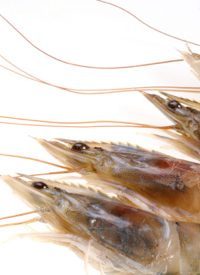
The project first came to light in an April 2011 report on the National Science Foundation (NSF) issued by Sen. Tom Coburn (R-Okla.). Coburn, famous for his annual reports on government waste, found what he considered to be “over $3 billion in mismanagement at NSF,” including $1.5 million to build a robot that can fold laundry (at a rate of one towel every 25 minutes), $300,000 to study whether Facebook’s FarmVille helps build personal relationships, and (at the time of the report) $559,681 to see if a shrimp’s treadmill performance is impaired by disease. Since then, says CNSNews.com, the shrimp research grant has been increased to $682,570.
The study is, in fact, not as ridiculous as it sounds. According to a description of the study on the NSF’s website, it aims to discover how “human-made marine stresses [are] affecting the marine life we need.” Specifically, College of Charleston biology professors Louis Burnett and Karen Burnett
want to understand how crustaceans, and other marine organisms, respond to bacterial exposures because these animals live in a veritable soup of bacteria: every teaspoon of seawater contains more than one million bacteria. So if, for example, the resistance of crustaceans to bacterial infections were to be compromised by human-made stressors, the vulnerability of these organisms to illness and death would likely increase.
Those “human-made stressors” include oxygen-deprived “dead zones” and pollution in the oceans.
The problem, of course, is that shrimp, crabs, and other sea creatures have no way of telling scientists how they feel. Thus, the Burnetts came up with what the website calls “an ingenious set of experiments that help them deduce this information.”
Here’s how the Burnetts’ experiments work: First, a crustacean is infected, by injection, with the same types of disease-causing bacteria that are commonly encountered in the wild. Next, the animal is placed on a specially built, mini underwater treadmill. Then, the organism’s vital signs, such as its heart rate and blood pressure, are measured (as a proxy for fitness) while it walks on the treadmill — similar to the way that a person’s vital signs are measured while he or she walks on a treadmill during a stress test. Finally, the treadmill performances of infected crustaceans are compared to those of their uninfected counterparts.
Not surprisingly, the Burnetts found that sick crustaceans “do not perform on the treadmill as well as their uninfected counterparts.” They also discovered that the animals’ immune responses reduce their ability to absorb oxygen and that as a result, they are less able to fight off infection in low-oxygen environments.
The Burnetts are continuing their research and hope to
lay the foundation for the development of an early warning system that could be used to help flag conditions that may harm economically and ecologically important crustaceans. Such a system could, for example, be used to determine when pollution levels from a sewage pipe would rise high enough to jeopardize the health or marketability of nearby organisms, such as oysters.
In short, while the notion of shrimp on a treadmill seems ridiculous, what the researchers discover from these crustacean stress tests could prove valuable. A similar case could probably be made for many of the NSF projects Coburn considered wasteful. For instance, as ABC News noted at the time Coburn’s report was issued, “One agency project helped lead to the creation of Google, while another led to the invention of bar codes.” Coburn conceded as much in the introduction to his report, saying, “The good news for taxpayers is that there is no question NSF has contributed significantly to scientific discovery.”
The real question, however, is not whether the NSF does some good or even whether the particular areas of “waste, fraud and abuse” that Coburn identified ought to be addressed. It is whether taxpayers ought to be funding scientific research in the first place. The answer to that can only be found in the document that established the federal government and the boundaries of its authority: the U.S. Constitution. Even a cursory reading of that yellowed parchment will show that Uncle Sam has no business whatsoever funding scientific research. Thus, regardless of the real or alleged benefits of NSF grants, they should be terminated immediately — not, as Coburn would have it, merely subjected to “active oversight and meaningful reform” — and the NSF put out to pasture. Let state governments or, better still, private institutions pay for research. It simply is not within Washington’s purview.
Besides, even if funding research were a valid use of federal tax dollars, the Treasury is broke and cannot afford to be spending money on nonessentials. Like shrimp, taxpayers now find themselves stuck on a treadmill of ever-increasing spending, taxes, and debt. Ending federal research grants would provide their weary wallets some much-needed relief.



